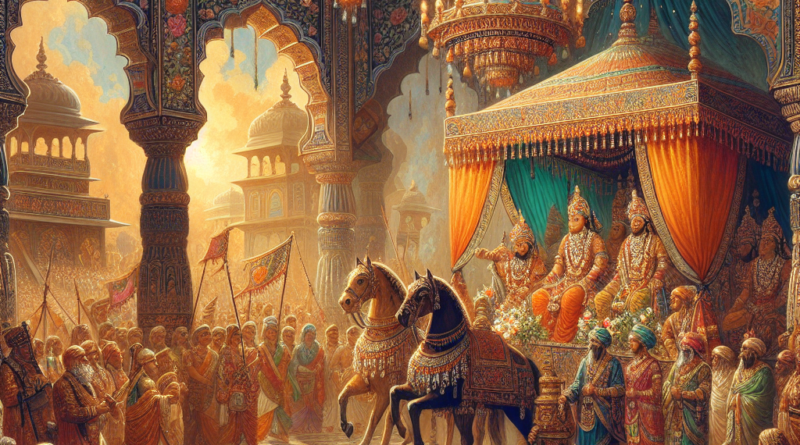The Rich Tapestry of Indian History Unveiled
Title: The Rich Tapestry of Indian History: Exploring Hindu and Indian Cultural Significance
Introduction
India, with its rich and diverse history, boasts a cultural heritage that is as ancient as it is vibrant. At the heart of this heritage lies Hinduism, one of the world’s oldest religions, and a major influence on Indian culture and society. In this article, we delve into the historical context and contemporary relevance of Hindu and Indian cultural significance, exploring how they have shaped the country’s identity over millennia.
Historical Context
The roots of Hinduism can be traced back to the Indus Valley Civilization, one of the world’s earliest urban societies dating back to 2500 BCE. The civilization’s archaeological remains reveal a reverence for nature and the concept of a higher power, elements that would later form the basis of Hindu religious beliefs. Over the centuries, the Vedic period saw the emergence of sacred texts known as the Vedas, which laid down the foundations of Hindu philosophy, rituals, and social norms.
The Gupta Empire (4th to 6th centuries CE) is often referred to as the golden age of Indian history, marked by advancements in art, literature, and science. It was during this period that Hinduism flourished, with temples and sculptures dedicated to various deities becoming prominent features of Indian architecture. The spread of Hinduism was facilitated by trade and cultural exchanges with neighboring regions, leading to the assimilation of diverse beliefs and practices into the Hindu fold.
The medieval period witnessed the rise of powerful Hindu kingdoms such as the Chola, Vijayanagara, and Maratha empires, each contributing to the enrichment of Indian culture through patronage of the arts, literature, and architecture. The Mughal era (16th to 19th centuries) saw a synthesis of Hindu and Islamic influences, resulting in the construction of magnificent monuments like the Taj Mahal, which symbolize the cultural pluralism that defines India.
Contemporary Relevance
Despite the passage of time, Hindu and Indian cultural significance continues to play a vital role in shaping the country’s social fabric and national identity. Festivals such as Diwali, Holi, and Navaratri serve as occasions for communities to come together in celebration, reinforcing bonds of kinship and solidarity. These festivals are not just religious observances but also cultural events that showcase the diversity and vibrancy of Indian traditions.
The concept of dharma, or righteous living, remains a guiding principle for many Indians, influencing their moral and ethical values. The teachings of ancient texts like the Bhagavad Gita emphasize the importance of duty, selflessness, and spiritual growth, providing a moral compass for individuals in navigating life’s challenges. Yoga and meditation, practices rooted in Hindu philosophy, have gained global popularity for their physical, mental, and spiritual benefits, highlighting the enduring relevance of Indian wisdom.
Indian art and architecture continue to captivate audiences worldwide, with UNESCO recognizing sites such as the Ellora and Khajuraho temples as world heritage landmarks. The intricate carvings, sculptures, and paintings found in these ancient structures reflect the artistic genius of Indian craftsmen and their deep spiritual devotion. Traditional dance forms like Bharatanatyam, Kathak, and Odissi are cherished for their grace, storytelling, and cultural significance, serving as repositories of India’s artistic heritage.
In the realm of literature, Indian epics like the Ramayana and Mahabharata continue to inspire writers, filmmakers, and artists, offering timeless lessons on morality, heroism, and the eternal struggle between good and evil. The enduring popularity of these epics reflects their universal themes and enduring resonance with audiences across generations.
Conclusion
Hindu and Indian cultural significance is a testament to the country’s rich tapestry of history, traditions, and values that have stood the test of time. From the ancient civilizations of the past to the modern complexities of the present, India’s cultural heritage continues to shape its identity and influence global perceptions. By celebrating and preserving this heritage, Indians honor their past while embracing the future, ensuring that the legacy of Hindu and Indian culture remains a source of inspiration and pride for generations to come.

